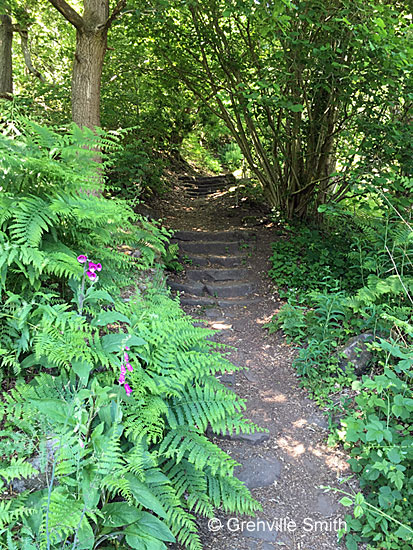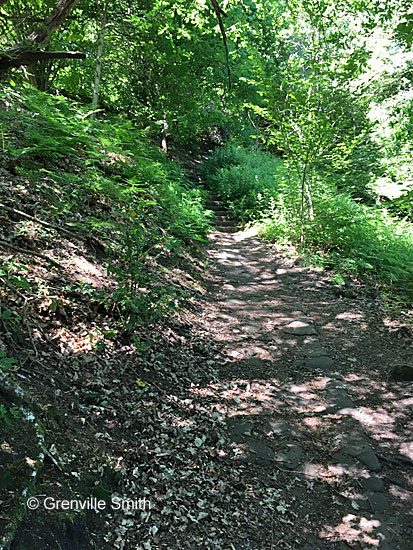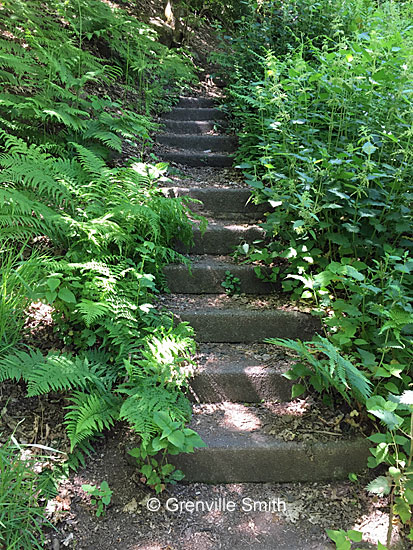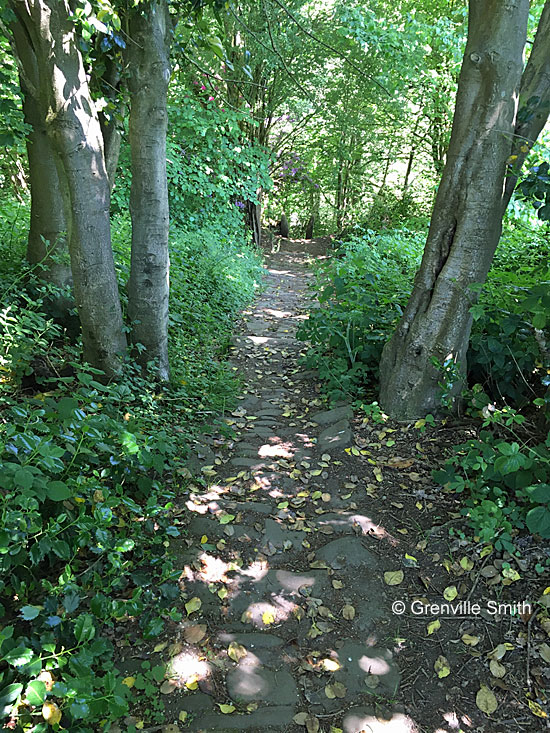|
Images Index> 20th & 21st Century, Matlock> This page |
| Matlock Bank. Path to Lumsdale, early 20th century |
| Matlock : Twentieth Century Photographs, Postcards, Engravings & Etchings |
|
|
||||||||||||
In 1902 there was a very lengthy meeting of Matlock Council, during which it was noted that Mr. F. H. Drabble had, at some point, written to them about the Lumsdale footpath and they had promised to do something about it. The Chairman informed the meeeting that this work had been done, and £15 had been spent on it out of the rate[1]. Mr. Drabble's concern would have stemmed from his business interests in Lumsdale[2]. Grenville Smith has walked up the footpath and supplied a number of photographs showing how it looks today. The biggest difference,
apart from the fact that the postcard view of the path is a winter scene whereas the photos below were taken in the summer, is how barren the hillside
then was. The few trees were tall and rather straggly pines but they do not detract from the glorious sunset. He began at the bottom of
the hill, and has provided helpful comments and captions for all of his images. The woodland floor was full of native plants, from ferns
to foxgloves. His final image, looking downhill towards the style, indicates both how overgrown the path has become in comparison with
the 1954-6 photo when the Rockside Students, walked here. The dry stone wall on
one side of the vertical stones is very damaged. He writes:
As the footpath leaves Lumsdale Road, it runs adjacent to the wall of a mill building and then a high boundary wall for Lumsdale House.  The footpath continues upwards as the boundary wall turns a right angle.  The best match to the postcard view. There is a rocky outcrop on the left of the steps (which can also be seen on the card). These steps are modern concrete replacements so there are more of them and they are in a slightly different position.  Approaching the replacement steps.  The next section leading up to the "squeeze" stile and wall. As mentioned, in the postcard the wall seems to be at the top of the valley side but in fact there is another section of the path past the stile where the gradient is less steep and so is hidden.  The actual top of the valley side with the Wishing Stone behind and looking back down to the gritstone stile. |
|||||||||||||
|
Postcard "Matlock Bank. Path to Lumsdale". Published by Raphael Tuck & Sons, Art Publishers to Their Majesties the King and Queen. Chromette No. 4919. This card unused but another was posted in 1909.© Ann Andrews. Photographs kindly provided by and © Grenville Smith, June 2021. Web page researched, written by and © Ann Andrews. Intended for personal use only. |
|||||||||||||
References (coloured links are to transcripts elsewhere on this web site): [1] "Derbyshire Times", 11 January 1902. A long sitting by Matlock Council. [2] F. H. Drabble is shown on Chesterfield Road in the 1901 census.
He may have used the footpath himself, and a number of his workers would almost certainly have done so. |




